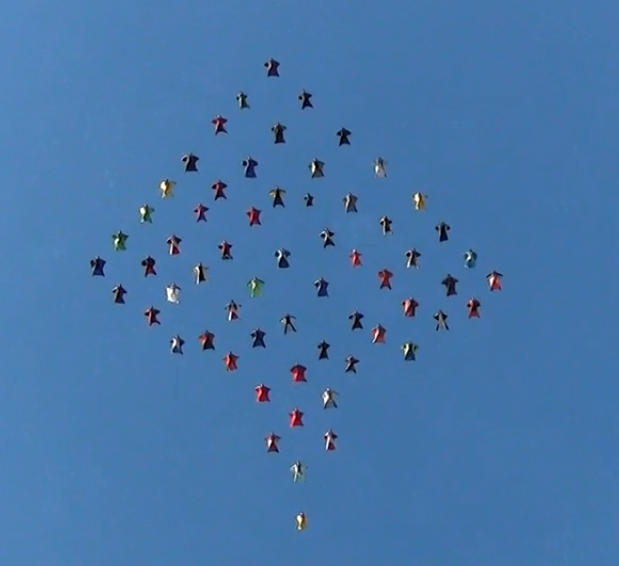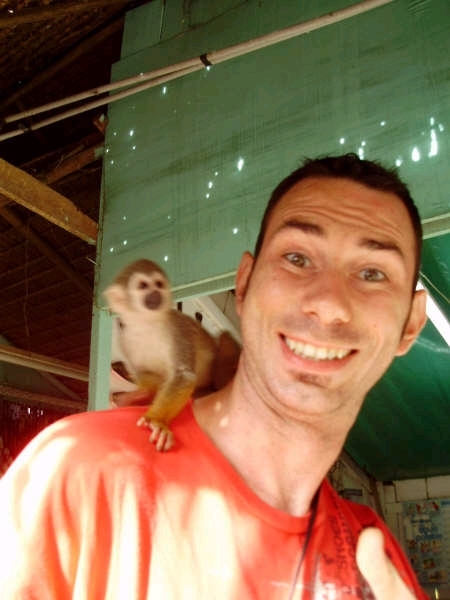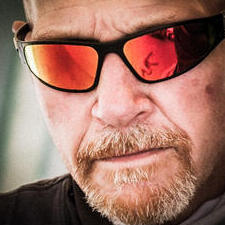Leaderboard
-
in Posts
- All areas
- Adverts
- Advert Questions
- Advert Reviews
- Videos
- Video Comments
- Blog Entries
- Blog Comments
- Images
- Image Comments
- Image Reviews
- Albums
- Album Comments
- Album Reviews
- Files
- File Comments
- File Reviews
- Dropzones
- Dropzone Comments
- Dropzone Reviews
- Gear
- Gear Comments
- Gear Reviews
- Articles
- Article Comments
- Article Reviews
- Fatalities
- Fatality Comments
- Fatality Reviews
- Stolen items
- Stolen item Comments
- Stolen item Reviews
- Records
- Record Comments
- Record Reviews
- Help Files
- Help File Comments
- Help File Reviews
- Events
- Event Comments
- Event Reviews
- Posts
- Status Updates
- Status Replies
-
Custom Date
-
All time
January 20 2016 - August 23 2025
-
Year
August 23 2024 - August 23 2025
-
Month
July 23 2025 - August 23 2025
-
Week
August 16 2025 - August 23 2025
-
Today
August 23 2025
-
Custom Date
08/09/2022 - 08/09/2022
-
All time
Popular Content
Showing content with the highest reputation on 08/09/2022 in Posts
-
2 pointsIntro As there are not a lot of ressources regarding a transition from skydiving to paragliding/speedflying available online, I decided to share my experiences and impressions in this post here. Even if you are not planning to get into paragliding yourself, it might still give some interesting insights. If you like, I can keep you updated on my journey. About my skydiving background Originally from Austria, I started skydiving in southern Germany back in August 2012 and got pretty hooked on it. After spending every weekend at the dropzone for about a year, I decided to quit my regular job, move to the dropzone and pursue a career there, although I always had to support it with at least a part time "normal" job. Living off skydiving alone is almost impossible within Germany. After about two years (as soon as legally possible) I got my coach and tandem instructor rating. I was able to earn money with skydiving from that point on, mainly doing videos, tandems and coaching jumps. My AFF rating followed soon after. My favourite discipline in skydiving has always been canopy piloting, why I invested lots of time, money and effort into that. I quit skydiving in the beginning of 2020 as I was starting to burn out after 7 seasons of 7-day-weeks during the summer and moved back to my origin in the Alps of Austria at the beginning of this year. Alltogether I did about 3500 jumps of which about 2000 have been on solo-canopies. My canopy progression was: * PD 170 (~150 jumps) * Pilot 150 (~150 jumps) - started working on high-performance landings with that canopy * Pilot 132 (~200 jumps) * Katana 120 (~200 jumps) * Velocity 96 (~300 jumps) * Valkyrie 84 (~1.000 jumps) - loaded with up to 35lbs of extra lead (total exit weight around 220lbs) (sample landing) Do not take my personal path as advice for your own downsizing. I went through some downsizing steps rather fast, but keep in mind that I did many of these jumps in shorter timespans than many other people and always had direct mentoring from more experienced pilots available. In retrospective I have to say, that the step from the Pilot 132 to the Katana 120 was the most challenging. My paragliding experience until now I started my training at Cloudbase, a professional, commercial paragliding school in Zell am Ziller (Tyrol, Austria) - huge recommendation by the way - last Saturday and completed my final exam yesterday. Usually training takes a bit longer (40 flights) but due to local regulations a shortcut for licensed skydivers is possible (15 flights, although practically not appropriate in many cases). Theoretical instruction is easy, but covers topics that many skydivers have likely never had any contact with. It might have helped that I also hold a commercial pilot license for airplanes and have quite some knowledge regarding meteorology and basic aerodynamics, but I doubt that my skydiving experience gave me an advantage in that area. During training (and some test flights today) I had the chance to fly the following paragliding wings (surface area in brackets although less relevant): * Mescal S (240 sqft) * Masala S (235 sqft) * Susi 23 (213 sqft) * Susi 21(190 sqft) * Kode P 18 (173 sqft) * Tonic 2 S (172 sqft) How do paragliding wings compare to skydiving canopies? I was surprised how much performance even large student paragliding wings offered in comparison to skydiving canopies for students. While a skydiving canopy for students (and to be honest - also most intermediate skydiving canopies) allows the pilot to hang in the harness like a bag of water and yank on the steering lines without any requirement for sensitivity, a paragliding wing requires immensely more coordinated inputs by harness and brakes to achieve an acceptable amount of control. I suppose a docile student paragliding wing would likely still not kill you, but it will be a very uncontrolled ride, if you fly it the same way a skydiving canopy allows you to fly. Techniques required to fly real high-performance skydiving canopies transition very well to paragliding. From the first flight on paragliding felt very natural and I had the feeling of having a good amount of control over the wing. I got lots of compliments to be the very first skydiver at the school with sensitivity for brake inputs. Aside from techniques like doing big ears, that are not used/available in skydiving, a huge difference is the possibility of (unintentionally) inducing extended rolling and pitching oscillations and the inputs required to stop these oscillations. Standard skydiving canopies do not really require such inputs and will quickly self stabilize (or at least keep the oscillations low). High-performance skydiving canopies require such inputs but still stabilize quicker than paragliding wings. While angle-of-attack control is not necessarily required to safely fly a skydiving canopy, like it is on a paragliding wing, it certainly allows much better flight path control even on less performant skydiving wings (Did you ever feel your controls become "mushy" after recovering from a turn input? Surprise! There's ways around that...). Some skydiving pilots might bring that skill, some might not. Paragliding wings are a lot easier to flare than their skydiving counterparts. I did not see a lot of really bad flares during the course on my coursemates without any pre-experience. That is likely due to the much lower sink rate and more lift that paragliding wings provide. I would not expect any skydiver to have much trouble correctly flaring a paragliding wing. Paragliding wings seem a lot less critical regarding low turns. While even very docile student skydiving canopies react with a good amount of dive to any turn, I have seen safe turns at heights that sent shivers down my former skydiving instructor spine during the past week. There are other dangers that come with paragliding wings, but the risk coming with low turns seem a lot lower with paragliding. I do not have any numbers on that feeling, so take it with a grain of salt. Conclusion I have a hand full of paragliding flights by now, so my opinion might either be false or have to be revised by myself in the future. High-performance canopy flying experience transitions very well to paragliding and should allow you to feel comfortable on a paragliding wing quickly. Controls are different but follow very similar principles. If you got the feeling for a high-performance skydiving canopy, you will likely have the feeling for a paragliding wing. At least a docile one (like to ones I used to fly during the past week) and at least in my case. I doubt that limited, other skydiving experience will give you a huge advantage on paragliding. Some things might feel similar, certainly taking away a good amount of stress. Some of your habits might be very counter-productive. And it is very well possible that you will have to seriously extend your "toolbox of canopy control". Recommendations In any case, do not assume that you know how to fly a paragliding wing, because you know how to control a skydiving canopy. It's different. I for my part decided to go with the Tonic 2 S for now. It's very slow in comparison to the Valkyrie 84 I used to fly, but it still behaves reasonably agile and I have the feeling that I got a good amount of work to do until I can fly it perfectly to its limits. It outperforms similarly sized skydiving canopies by far. Speedflying is my goal, but I do not see any reason to rush it. Doing some paragliding training could be a good addition to becoming a great skydiving canopy pilot. I can see paragliding skills and knowledge transition extremely well to skydiving canopy control, if you already bring some skydiving experience. Paragliding training is super cheap in comparison to skydiving. And it's a huge amount of fun.
-
2 points
-
2 pointsRepublicans are criticizing the search as politically motivated. They seem to forget that FBI Director Wray is a Trump appointee. The also seem to forget what they did to AG Garland for purely political reasons. Fucking hypocrites.
-
2 pointsI would think the dirtiest, chunkiest oil with the most metals possible would be ideal for that. I mean, this stuff might even burn sorta clean and then where would you be? With less toxic smoke, that's where! You'd be the laughingstock of Howdy Arabia.
-
2 points
-
2 pointsIt's like holding a fart in the airplane. You don't do it for yourself, you do it for your fellow skydivers. What could be more noble?
-
1 pointFound out from Rollins interview that this is the same incident,, one report is from the witness's father.. Rollin's talked to the witness and claims the man was dressed in all black.. (white shirt) FWW
-
1 pointTo your and Phil's point, I wasn't trying to disparage any other currencies or say that USD are inherently better. I was painfully reminded of the strength of the CAD recently when was looking at tickets home to visit my mother in NS. I believe the point you were trying to make is that the USD isn't the be-all, end-all currency and that there are other currencies with equivalent values. I agree that that's how it should be, and is for most of the world, but I'd bet that for 90+% of Venezuelan store owners, a Canadian $20 note would be worth less to them than a $5 USD. It's fucked up, but it ranks pretty low on the list of things that are fucked up in that country.
-
1 pointCanada is currently having real issues with staffing medical services. Burnout from covid has resulted in huge losses of physicians and nurses. So some hospitals have shut down er rooms and delayed services. IMO part of the blame lies with stupid people who didn't take covid seriously. Politicians and careless people. Since the euro is at par its equally possible. With Canadian dollars about 75% possible.
-
1 pointI once spent a week in a hospital in Bonaire with a double pneumonia. I was working in Venezuela and needed to leave every 90 days for a fresh stamp on the visa. For a while my company would fly me to DWI for a weekend to exit the country, before they just started whoring me out to other districts in the region (which also gave me an opportunity to have a good interaction with the Colombian medical system). While the hospital in Bonaire left a lot to be desired and would have been stupidly expensive if not for my company's international insurance plan, I'm damn glad I didn't get that sick in Venezuela!
-
1 pointWe have no intentions of leaving Colombia and will probably spend the remainder of our lives with this as our home base. That being said, if we did ever leave for any reason, we have already made the decision that we will never again live in a country that doesn't have universal healthcare.
-
1 pointThat initial advice was valid with student canopies, because you were never going to out-spiral a smaller, heavier-loaded canopy. At the other end of the scale, it can be to everyone's advantage if the tiny (sub-100 square foot), heavily-loaded pond swoopers land first. The challenge is for them to spiral down off to the side of tamer traffic. Spiraling in the pattern is discouraged for two reasons (below 1,500 feet and near the target). First, spiraling makes it difficult for others to predict where you will be 10 or 20 seconds later. They are trying to fly their landing pattern in a way that does not cross your landing pattern. It helps if you landing pattern is predictable. The second reason for discouraging spirals in the pattern is to discourage the radical turns (old school hook turns) that lead to radical pond swoops. Many DZOs have banned hook turns because they are tired of calling ambulances and attending funerals. Hook turns were the pre-cursor (circa 1990) to modern high-performance carving approaches. Hook turns often started with toggle-whipping at such low altitudes that the canopy barely had enough altitude for its recovery arc. If you were even a little late hook-turning, you were forced to slab your toggles again (late flare) or get a ride in an ambulance on the way to meeting nurses, surgeons, physio-therapists, etc.
-
1 pointOscillations were visual on the pressure gauge... The "bump" was felt... described as an extreme oscillation on the gauge. The bump is also an extreme gauge oscillation.. They are are simultaneous events. Rataczak, "I could feel the stairs coming down, we then felt a big bump in our ear.. So, when he jumped and left the airplane at that very moment I got on the radio to Air Traffic Control and I said quote I think our friend has just taken leave of us, mark it on your shrimp boats, that's what they call the radar screen"
-
1 pointGet a big wingsuit! That way you have the sky to yourself under canopy For realsies though my rule is: If I can count every canopy on the load (like a 182 DZ), then I'll be a total asshole under canopy. Spirals, stalls, have a good pee... You know the works If I can't count all canopies easily then I fly like a conservative grandma going to church. So just depends on the DZ/load specifics
-
1 pointMany drop zones discourage spirals and some even prohibit them as a way to reduce collision risks. I'm ok with spirals above pattern altitude as long as the jumper has cleared the air around and below. From pattern altitude to the ground I discourage any turns not required for reasonable accuracy.
-
1 pointRecently a routine police patrol was parked outside a bar late one night. After last call, the officer noticed a man leaving the bar so apparently intoxicated that he could barely walk. The man stumbled around the parking lot for a few minutes, with the officer quietly observing. After what seemed an eternity, in which he tried his keys on five different vehicles, the man managed to find his car and fall into it. He sat there for a few minutes as a number of other patrons left the bar and drove off. Finally he started the car, switched the wipers on and off; it was a fine, dry summer night, flicked the blinkers on and off a couple of times, honked the horn and then switched on the lights. He moved the vehicle forward a few inches, reversed a little, and then remained still for a few more minutes as some more of the other patrons' vehicles left. At last, when his was the only car left in the parking lot, he pulled out and drove slowly down the road. The police officer, having waited patiently all this time, now started up his patrol car, put on the flashing lights, and promptly pulled the man over and administered a breathalyser test. To his amazement, the breathalyzer indicated no evidence that the man had consumed any alcohol at all! Dumbfounded, the officer said, "I'll have to ask you to accompany me to the police station. This breathalyser equipment must be broken." "I doubt it," said the truly proud guy. "Tonight I'm the designated decoy."
-
1 point"Ladies and gentlemen, I'll be brief. The issue here is not whether we broke a few rules, or took a few liberties with our female party guests - we did. But you can't hold a whole fraternity responsible for the behavior of a few, sick twisted individuals. For if you do, then shouldn't we blame the whole fraternity system? And if the whole fraternity system is guilty, then isn't this an indictment of our educational institutions in general? I put it to you, Greg - isn't this an indictment of our entire American society? Well, you can do whatever you want to us, but we're not going to sit here and listen to you badmouth the United States of America. Gentlemen!"
-
1 pointBorowitz' take on it: https://www.newyorker.com/humor/borowitz-report/justice-department-urges-trump-to-hire-alex-joness-lawyers
-
Newsletter

.thumb.jpg.4bb795e2eaf21b8b300039a5e1ec7f92.jpg)




